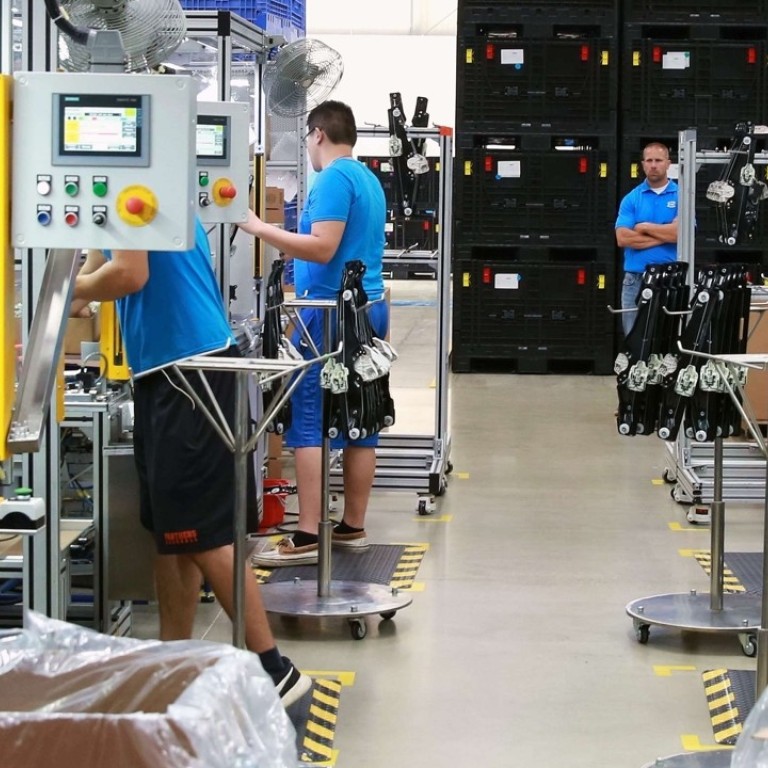
China slaps back at latest United States tariffs in trade war escalation
The Chinese government has matched the latest American tariffs with a further 25 per cent duty on an additional US$16 billion worth of goods
The trade war between China and the United States has escalated, even as officials from the two nations are trying to defuse tensions, with both sides slapping tariffs on another US$16 billion of each other’s imports.
The latest 25 per cent duties were announced on Thursday, as Vice-Commerce Minister Wang Shouwen was in Washington for talks with US Treasury Undersecretary David Malpass.
Washington’s new tariffs cover 279 product categories – including semiconductors, plastics, chemicals and railway equipment – which its trade representative said had benefited from “Made in China 2025”, a tech strategy supporting domestic innovation.
China’s list, which took effect one minute after the US duties kicked in, covers 333 product categories including aviation fuels, scrap copper and vehicles.
In a statement, China’s commerce ministry said the latest US tariffs were a violation of World Trade Organisation rules.
“China has no alternative but to take countermeasures,” the ministry said.
The new US tariffs complete US President Donald Trump’s first round of measures targeting US$50 billion of Chinese imports. Tariffs on US$34 billion of goods were imposed by Washington and Beijing on July 6.
Chinese English-language broadcaster removes mocking Trump video
Observers played down the prospect of a breakthrough in the talks between Wang and Malpass, saying they instead expected tensions to increase further.
Chinese foreign ministry spokesman Lu Kang said he hoped the United States could meet China “halfway”. But Washington appears to be maintaining its tough stance.
US Commerce Secretary Wilbur Ross on Wednesday said China would not give up easily and would retaliate “a little bit”.
“But at the end of the day, we have many more bullets than they do. They know it. We have a much stronger economy than they have, they know that too,” Ross said on CNBC at a Century Aluminum smelter in Hawesville.
Last week, White House economic adviser Larry Kudlow warned that Beijing must not underestimate Trump’s determination to force China to change its trade practices.
“The Chinese government, in its totality, must not underestimate President Trump’s toughness and willingness to continue this battle to eliminate tariffs and non-tariff barriers and quotas, to stop the theft of intellectual property and to stop the forced transfer of technology,” Kudlow told US business news network CNBC.
In a commentary on Thursday, state-run news agency Xinhua took a cautious tone on the possible outcome of the talks.
“The maximum pressure approach featuring my-way-or-no-way logic and a zero-sum mentality has proved fruitless for China, and risks a renewed no-win prospect,” it said.
“While mulling over its trade strategy on China, Washington cannot overlook the cries of US industries affected or to be affected by its current confrontation with China.”
What really lies behind the US-China trade war
Tariffs threatened by both sides are expected to cause China’s economy to slow more sharply next year if they are enacted.
The ongoing trade conflict will reduce China’s economic growth by 0.2 percentage points this year and 0.3 percentage points in 2019, according to estimates by economists.
But Zhang Yansheng, chief research fellow at the China Centre for International Economic Exchanges, said the US was blaming other countries for its decreasing competitiveness.
“The best strategy that China can take is not to react so quickly. Let all the problems and differences be fully exposed first in order to manage expectations and reach a consensus. If we take it more slowly, we will make fewer mistakes, and we will be able to better manage and control mistakes when they happen,” he said.
Additional reporting by Kinling Lo and Reuters

